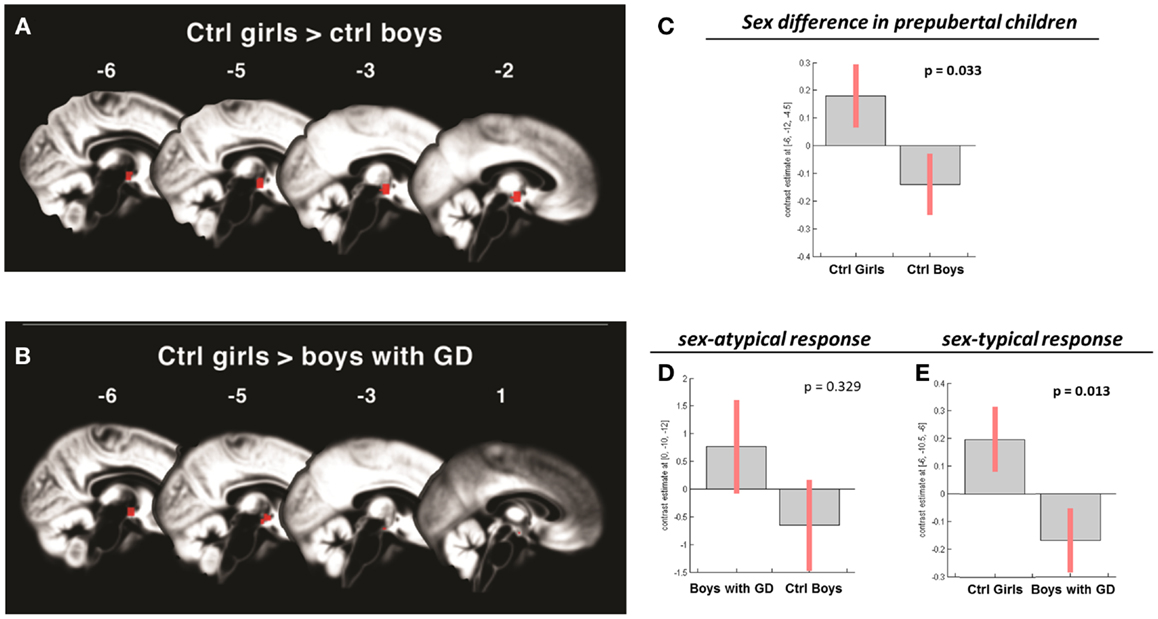Men with gender dysphoria, commonly called gender identity disorder, are born as males but behave as and identify with women and want to change sex.
Around puberty, the testes of men start to produce androstadienone, a musky-smelling steroid produced by men
as a breakdown product of testosterone. Men release it in their sweat, especially from the armpits. Its only known function is to work like a pheromone; when women smell androstadienone, their mood tends to improve, their blood pressure, heart rate, and breathing go up, and they may become aroused.
The brains of children with gender dysphoria react to androstadienone in a way typical of their biological sex - until they hit puberty, when they tend to experience it according to their professed gender, finds a study in Frontiers in Endocrinology. The hypothalamus also reacts strongly to its odor. In contrast, the hypothalamus of heterosexual men hardly responds to it.
Studies have shown that, in heterosexual women, the brain region that responds most to androstadienone is the hypothalamus, which lies just above the brainstem and links the nervous system to the hormonal system. Girls without gender dysphoria before puberty already show a stronger reaction in the hypothalamus to androstadienone than boys, finds the new study by Sarah Burke and colleagues from the VU University Medical Center of Amsterdam, the Netherlands, and the University of Liège, Belgium.
The researchers used neuroimaging, so calibrate the results based on the questionable use of pictures in science, and saw that in prepubescent children with gender dysphoria, the hypothalamus reacts to the smell of androstadienone in a way typical of their biological sex. Around puberty, the images shift and become typical of their experienced gender.
(A,B) Show the anatomic locations of the significant hypothalamic activations, indicated in red, in response to the chemo-signal androstadienone in the pre-pubertal age groups. The numbers above each sagittal plane represent the x-axis coordinates in Montreal Neurological Institute space. All voxels within the hypothalamic region of interest, surviving the statistical threshold of p < 0.05 (FWE-corrected) are shown. (C–E) Show the bar graphs of the corresponding group contrasts for the first-order time-modulation regressor, indicating group differences in sensitization to the steroid odor. (C) Displays the sex difference, i.e., between control girls and boys; (D) shows the non-significant sex-atypical (i.e., female-like) and (E) indicates the significant sex-typical (i.e., male-like) response of boys with gender dysphoria.
doi: 10.3389/fendo.2014.00060
The reaction to the smell of androstadienone in the hypothalamus of 154 children and adolescents, including girls and boys, both before (7 to 11-year-old) and after puberty (15 to 16-year-old), of whom 74 had been diagnosed with gender dysphoria.
Results showed that the hypothalamus was more responsive to androstadienone in 7 to 11-year-old girls than in boys, both without gender dysphoria, although not yet as much as in adolescent girls. This means that the greater receptiveness of women to its odor already exists before puberty, either as an inborn difference or one that arises during early childhood.
Before puberty, the hypothalamus of boys with gender dysphoria hardly reacted to the odor, just as in other boys. But this changed in the 15 to 16-year-olds: the hypothalamus of adolescent boys with gender dysphoria now lit up as much as in heterosexual women, while the other adolescent boys still did not show any reaction. Adolescent girls with gender dysphoria showed the same reaction to androstadienone in their hypothalamus as is typical for heterosexual men.
These results suggest that as children with gender dysphoria grow up, their brain naturally undergoes a partial rewiring, to become more similar to the brain of the opposite sex – so corresponding to their experienced gender.







Comments